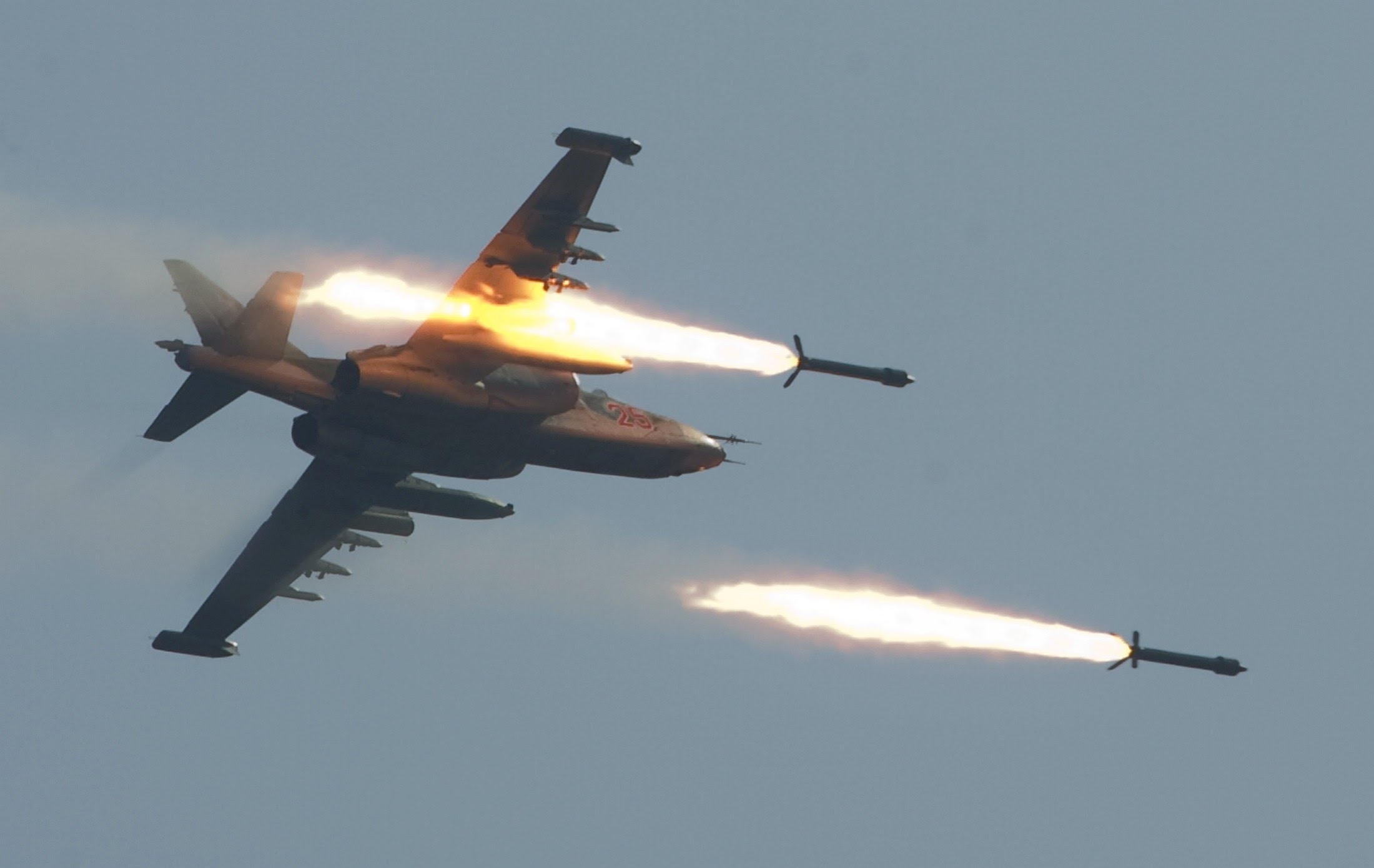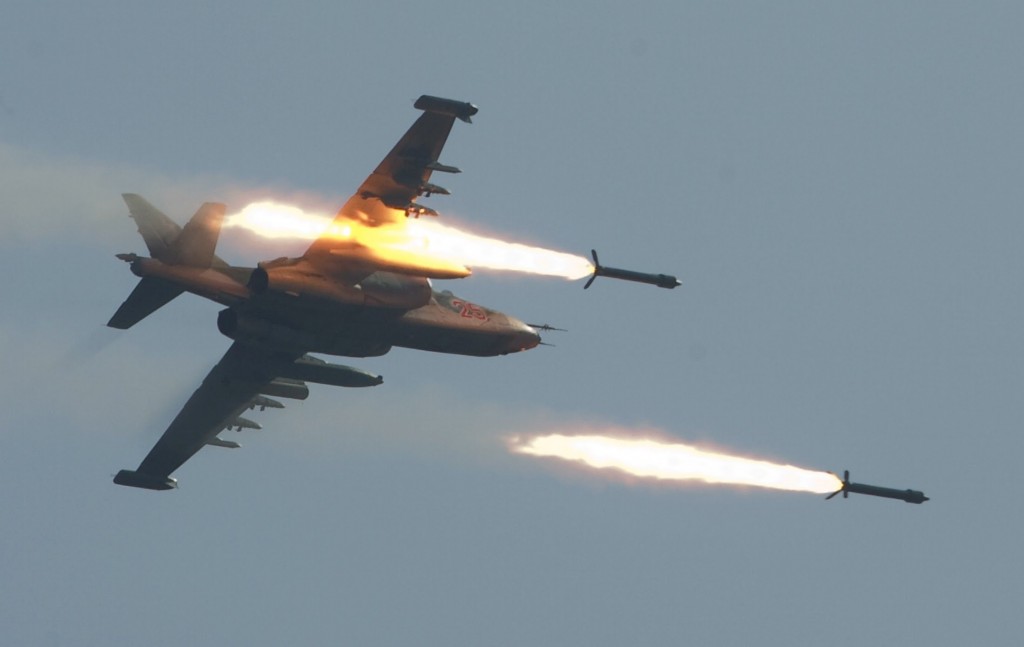Sourced War is Boring
By Tom Cooper
Air strikes have resumed in war-torn eastern Aleppo. But exactly who is bombing who?
Boosters of Russia and Syrian president Bashar Al Assad’s regime — and even Iranian news agencies — tend to attribute the majority of the air strikes to Russia. Western journalists, various NGOs and even diplomats make the same mistake, and blame Russian air strikes for most of the devastation and civilian deaths in eastern Aleppo.
They’re all equally wrong. Yes, Russia is bombing the Hell out of Syria. But its forces are mostly targeting rebel- and civilian-controlled areas outside of Aleppo. And the Russians are not hitting Islamic militants, as they claim.
Meanwhile, the aerial slaughter in Aleppo is the fault of Al Assad’s own air force.
No doubt, Moscow is adding plenty of propaganda fuel to this information fire. Russian officials brag about “massive strikes on Da’esh and Al Nusrah Front targets in Idlib and Homs provinces,” and “precise attacks” on “command centers,” “storage depots” and similar targets.
According to Russian foreign minister Sergey Lavrov, the air raids are aimed at “preventing the flight of the Islamic State from Mosul to Idlib and Homs.”
Leaving aside the fact that Al Nusrah Front changed its names to “Front for Conquest of the Sham” more than four months ago, and that the group is actually split into two factions — one opposed to maintaining ties with Al Qaeda and the other in favor — it’s bizarre to hear Russia claiming that Islamic State maintains any presence in this part of Syria.
ISIS fled the vicinity of eastern Aleppo, Idlib and Homs in early 2014, following its defeat by Syrian rebels.
Likewise, there’s no evidence that ISIS fighters are retreating to the area from Mosul, some 500 miles away, as doing so would mean passing through territory controlled by the Al Assad regime and the Iranian Islamic Revolutionary Guards Corps. By contrast, the direct route to Islamic State’s Syrian capital, Ar Raqqa, remains wide open.
Cross-examining hundreds of public reports of air strikes in northwestern Syria from mid-October to mid-November 2016 makes one thing clear. The majority of air strikes flown by the Russian air force and, since Nov. 11, 2016, Russian naval aviation targeted insurgents from the Free Syrian Army in the area between Jishr Ash Shughour, Ma’arat An Nauman, Lataminah and Khan Sheikhoun in western Idlib governorate.
Insurgents of the Free Syrian Army hold this area, and have deliberately vacated many towns in an effort to spare them from air strikes. Moreover, the population of Ma’arat An Nauman staged daily mass protests against Al Nusra Front every single day for 130 consecutive days in 2016 — until repeated Russian air strikes, ostensibly targeting Al Nusrah, forced them to stop.
Farther north, frequent — and often intensive — Russian aerial activity has been recorded in the Sarqib area. This video depicts near-simultaneous operations by Russian air force Su-24 bombers, a Tu-214R spy plane and what appears to be an Su-35 fighter over the town on Nov. 17, 2016.
Sarqib used to be the major base of the Al Qaeda-linked Jund Al Aqsa group. However, the Jund — once some 300-strong and largely composed of Russian nationals — withdrew from Sarqib in the summer of 2016 and was subsequently mostly destroyed by Syrian Salafists from the Ahrar Ash Sham movement.
Another area of interest for the Russian military in Syria is the western Aleppo governorate, especially towns such as Darat Izza, Anadan, Hreitan, Kfar Hamra and Urum Al Kubra — all of which are around 10 or 15 kilometers from the nearest front line.
Exactly what the Russians are targeting there is largely unknown to outsiders — although it’s clear that the incendiary munitions Moscow is so fond of are causing widespread death and destruction in civilian areas of western Aleppo. What’s certain is that, after accidentally striking allied forces several times in 2016, the Russians halted any effort to bomb targets near any front line.
The few exceptions to this rule are those strike for which the Kremlin has released video materials that can be geo-located. Curiously, the majority of these are attacks on military facilities south and southeast of Aleppo city that insurgents and jihadists abandoned in late 2015.
They also show that Russian targeting — even with cruise missiles fired from barely 100 kilometers away — remains anything but precise. Considering the Russian air force’s over-dependence on the SVP-24 nav/attack system installed on its fighter-bombers plus that system’s reliance on the Russian GLONASS global positioning system, this is hardly surprising.
The SVP-24 depends on the availability of differential GLONASS stations within 100 to 150 kilometers of the target. While such stations are relatively small and simple pieces of equipment, the VKS is known to have deployed them in only two areas — at Hmemmem air base on the Syrian coast of the Mediterranean Sea, and at Kweres air base, around 30 kilometers east of Aleppo.
Their availability did help to improve the precision of the Russian air force’s bombs from an average of 100 meters off target to around 40 meters off target in northeastern Latakia, for example — but not elsewhere. No matter how much various Russian and foreign journalists praise the SVP-24, the system cannot defy physical laws nor change the weather — especially the wind — which can throw weapons off course after release.
While Russia bombs inaccurately miles away from the Syrian front lines, The Syrian air force strikes closer to the ground fighting in areas still full of civilians in eastern and western Aleppo and Idlib, and in the besieged Ra’astan and Al Wa’er districts of northern Homs.
At the first glance, it’s easy to confuse Russian and Syrian aircraft. But look closer. The only type flown by both air forces is the Sukhoi Su-24 bomber. Even then, Russian Su-24s are easy to tell from Syrian ones, as Moscow’s bombers always fly high — 20,000 feet or so — and with their wings swept fully forward. Syrian Su-24s usually fly much lower — 6,000 feet or lower — and with their wings swept back 45 degrees.
And the types the Syrian air force deploys most often for air strikes on eastern and western Aleppo city are Mi-8 and Mi-25 helicopters based at As Safira helidrome, 25 kilometers southeast of the city; Aero L-39 training jets based at Nayrab and Kweres air bases; and Sukhoi Su-22 bombers from As Seen and Tiyas air bases in central Syria.
While the Russians also operate Mi-8s and Mi-24/35s in Syria, these are rarely seen over Idlib governorate and have never appeared anywhere near Aleppo city. All the other types that the Syrian regime still relies on were withdrawn from Russian service decades ago.
Watch the aerial activity over this part of Syria carefully and you’ll realize that the Syrian and Russian air forces are almost never airborne over the same locality at the same time. Regime loyalists literally keep office hours, launching most of their helicopters and fixed-wing aircraft between 8:00 and 9:00 in the morning, local time, and usually recovering the last aircraft around 4:00 in the afternoon. Russian operations are sporadic and often days-long.
Syria’s L-39s are the major exception to the above rules, and fly most of their attack sorties during the late afternoon and evening. They’re generally the only Syrian warplanes that operate at the same time that Russian Su-24s, Su-30s, Su-34s and Su-35s do.
Contrary to certain Western intelligence assessments, loyalists do fly at night — albeit very, very rarely.
Certain conclusions are obvious. Foremost is that Moscow might be right when it stresses that it’s not bombing eastern Aleppo. However, that doesn’t meant than nobody is hitting civilians in that part of Aleppo. The Syrian regime is certainly doing so.
Likewise, just because Russia isn’t bombing eastern Aleppo doesn’t mean it isn’t striking innocent civilians in other parts of Syria where there aren’t any militants at all.


